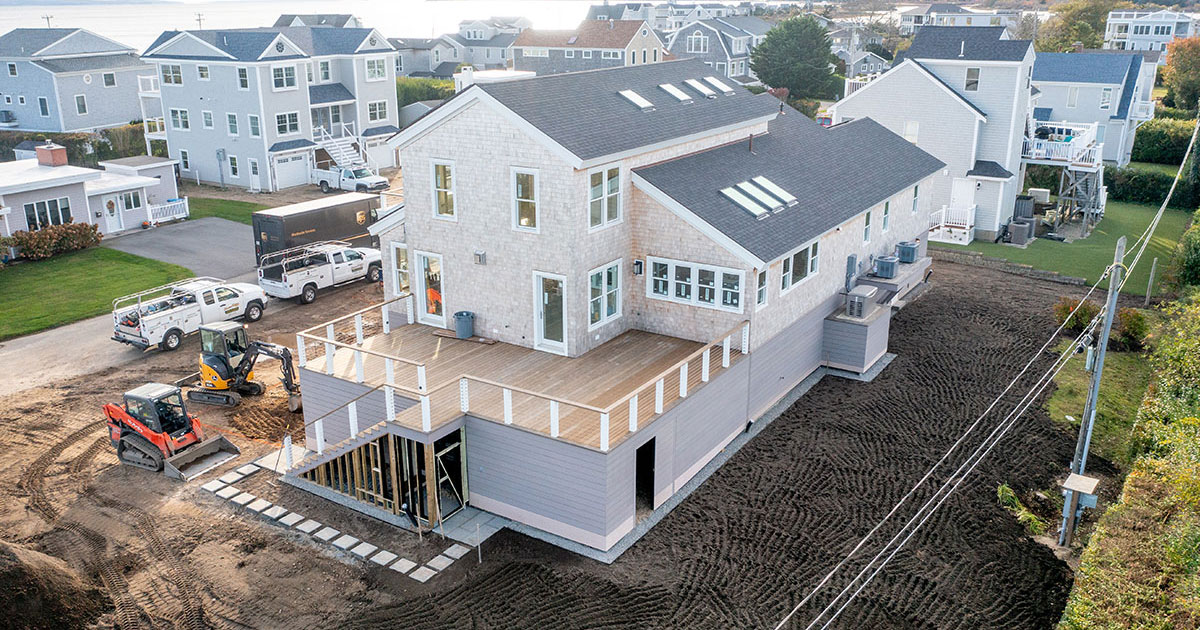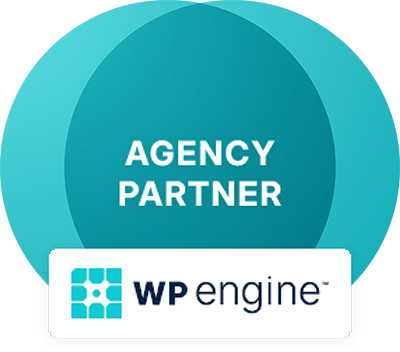
Common Website Issues Construction Companies Face (and How to Fix Them)
A well-designed website is an essential asset for any construction company. It serves as a platform to showcase services, build credibility, and generate leads. However, many construction companies face common website issues that hinder their ability to attract clients and compete effectively in the digital space. These problems can range from outdated designs to technical errors that hurt user experience and SEO rankings.
In this article, we’ll explore the most common website issues construction companies face and provide actionable tips to resolve them.
Outdated Website Design
The Issue:
An outdated website design can make your company look unprofessional and untrustworthy. Poor navigation, cluttered layouts, and unappealing visuals deter potential clients from exploring your services.
The Fix:
- Redesign for Modern Appeal: Use clean layouts, professional imagery, and clear calls-to-action (CTAs).
- Responsive Design: Ensure your website looks great on all devices, including smartphones and tablets.
- Focus on Branding: Incorporate your company’s logo, colors, and mission statement to reflect your professionalism.
Pro Tip: Regularly review and refresh your website design every 3–5 years to keep it current with trends.
Slow Loading Times
The Issue:
Websites that take too long to load frustrate visitors, leading to higher bounce rates and lower search engine rankings. Slow-loading pages can be caused by large image files, excessive plugins, or outdated hosting.
The Fix:
- Optimize Images: Compress image files without sacrificing quality.
- Use a Content Delivery Network (CDN): Distribute website content across multiple servers for faster loading.
- Upgrade Hosting: Invest in reliable hosting services designed for business websites.
Pro Tip: Use tools like Google PageSpeed Insights or GTmetrix to test and improve your website’s load time.
Poor Mobile Optimization
The Issue:
More than half of all web traffic comes from mobile devices. If your website isn’t optimized for mobile, you risk alienating potential clients who can’t navigate your site easily.
The Fix:
- Responsive Design: Ensure your website adjusts seamlessly to different screen sizes.
- Simplify Navigation: Use large buttons, concise menus, and mobile-friendly forms.
- Test Across Devices: Regularly test your site on various smartphones and tablets to ensure a smooth experience.
Pro Tip: Prioritize mobile-first design to cater to today’s on-the-go audience.
The Importance of Voice Search Optimization
With the rise of smart devices, many users now rely on voice search to find local services. Construction companies with websites not optimized for voice queries may miss out on these leads.
The Fix:
- Use conversational keywords and phrases that mimic how people speak (e.g., “Who are the best general contractors near me?”).
- Create an FAQ section to target common voice search questions.
- Focus on local SEO to ensure you appear in location-based voice searches.
Pro Tip: Test your website’s performance by using voice search on devices like Alexa, Siri, or Google Assistant.
Lack of Clear Calls-to-Action (CTAs)
The Issue:
A website without clear CTAs leaves visitors unsure of what to do next, reducing the likelihood of inquiries or conversions.
The Fix:
- Strategic Placement: Place CTAs prominently on your homepage, service pages, and blog posts.
- Action-Oriented Language: Use phrases like “Request a Free Quote,” “View Our Portfolio,” or “Contact Us Today.”
- Consistency: Ensure CTAs are consistent in design and messaging across your site.
Pro Tip: Use contrasting colors to make CTAs stand out visually.
Personalized CTAs for Different User Stages
Generic CTAs may not appeal to all visitors, as users at different stages of the buyer’s journey have varying needs.
The Fix:
- For new visitors: Use CTAs like “Learn About Our Services” or “Explore Our Projects.”
- For engaged users: Encourage deeper action with “Request a Quote” or “Schedule a Consultation.”
- For returning clients: Promote updates with “See Our Latest Projects” or “Contact Us for Repeat Services.”
Pro Tip: Use tools like A/B testing to identify which CTAs resonate most with your audience.
Incomplete or Outdated Content
The Issue:
Clients rely on your website for accurate information about your services, portfolio, and contact details. Incomplete or outdated content can cause confusion and harm your credibility.
The Fix:
- Regular Updates: Ensure all pages are up-to-date with your latest services, pricing, and contact information.
- Showcase Recent Projects: Update your portfolio regularly with new photos and project descriptions.
- Create Fresh Content: Post blogs or news updates to keep your site dynamic and engaging.
Pro Tip: Use a content calendar to schedule updates and ensure consistency.
Visual Storytelling for Content Updates
Static text may fail to capture attention, but incorporating visual storytelling can elevate engagement.
The Fix:
- Create short videos or photo galleries showcasing ongoing projects.
- Use before-and-after images for impactful transformations.
- Design infographics to explain complex processes or project results.
Pro Tip: Embed visuals strategically on high-traffic pages to maximize impact.
Poor SEO Performance
The Issue:
If your website doesn’t rank well in search engine results, potential clients may never find you. Poor SEO often stems from issues like missing keywords, slow loading speeds, and lack of local optimization.
The Fix:
- Keyword Optimization: Research and use relevant keywords like “commercial construction in [City]” or “home renovation experts.”
- Local SEO: Optimize your Google My Business profile and use location-specific keywords.
- Technical SEO: Address issues like broken links, missing meta descriptions, and slow load times.
Pro Tip: Use tools like SEMrush or Ahrefs to monitor your SEO performance and identify areas for improvement.
Ineffective Contact Forms
The Issue:
Complicated or buggy contact forms can frustrate users and prevent potential leads from reaching out.
The Fix:
- Simplify Forms: Only ask for essential information like name, email, phone number, and a brief project description.
- Test Regularly: Ensure forms work across all devices and browsers.
- Use Automation: Set up auto-response emails to confirm receipt of inquiries and keep clients informed.
Pro Tip: Include multiple ways to contact you, such as phone numbers and direct email addresses, for added convenience.
Multi-Step Contact Forms for Complex Inquiries
For larger projects, a basic contact form may not collect enough information, but overly complex forms can deter users.
The Fix:
- Implement multi-step forms that ask for basic details upfront and expand to collect more information as needed.
- Include progress indicators to reassure users of a simple process.
- Add an option to upload documents or project plans directly through the form.
Pro Tip: Use conditional logic to show additional questions only when relevant, keeping the process user-friendly.
Weak Security Features
The Issue:
A website without proper security measures is vulnerable to cyberattacks, which can compromise client data and damage your reputation.
The Fix:
- SSL Certificate: Ensure your website uses HTTPS to encrypt data.
- Regular Updates: Keep your content management system (CMS), plugins, and themes updated.
- Backup Your Site: Use automated backups to recover quickly in case of a breach.
Pro Tip: Invest in a web application firewall (WAF) to protect against common threats like malware and SQL injections.
Poor Navigation
The Issue:
A confusing or cluttered navigation menu makes it difficult for visitors to find the information they need, leading to frustration and higher bounce rates.
The Fix:
- Simplify Menu Items: Focus on essential categories like Home, About Us, Services, Portfolio, and Contact.
- Add a Search Bar: Help users find specific information quickly.
- Use Breadcrumbs: Show users their location within your site structure for easier navigation.
Pro Tip: Test your site’s navigation with new users to ensure it’s intuitive and user-friendly.
Lack of Analytics and Performance Tracking
The Issue:
Without tracking tools, you won’t know how visitors are interacting with your site or what improvements are needed.
The Fix:
- Install Google Analytics: Monitor traffic, user behavior, and conversion rates.
- Use Heatmaps: Tools like Hotjar show where users click and scroll on your site.
- Track SEO Metrics: Use tools to analyze keyword rankings and search performance.
Pro Tip: Regularly review your data and adjust your strategies based on insights.
Use Custom Dashboards for Performance Monitoring
Analyzing website performance can be overwhelming without streamlined data visualization.
The Fix:
- Set up custom dashboards in tools like Google Analytics or Data Studio to track key metrics at a glance.
- Include metrics such as bounce rates, average session duration, and top-performing pages.
- Automate weekly or monthly reports to stay updated without manual effort.
Pro Tip: Align performance metrics with business goals, such as tracking leads generated through CTAs or portfolio page visits.
Bonus Tip: Prioritize Accessibility Compliance
Construction companies often overlook accessibility, but an inclusive website can reach a broader audience and improve usability for everyone.
The Fix:
- Use alt text for images to assist visually impaired users.
- Ensure navigation can be accessed with a keyboard for those with mobility challenges.
- Choose color contrasts that meet ADA (Americans with Disabilities Act) guidelines.
Pro Tip: Conduct an accessibility audit using tools like WAVE or Lighthouse to identify and address compliance gaps.
Fixing Common Website Issues to Drive Success
Your website is a vital tool for attracting clients, building credibility, and growing your construction business. Addressing common issues like outdated design, slow loading times, and poor SEO can significantly enhance your site’s effectiveness. By investing in regular maintenance, optimization, and fresh content, you can ensure your website remains a powerful asset that supports your business goals.







